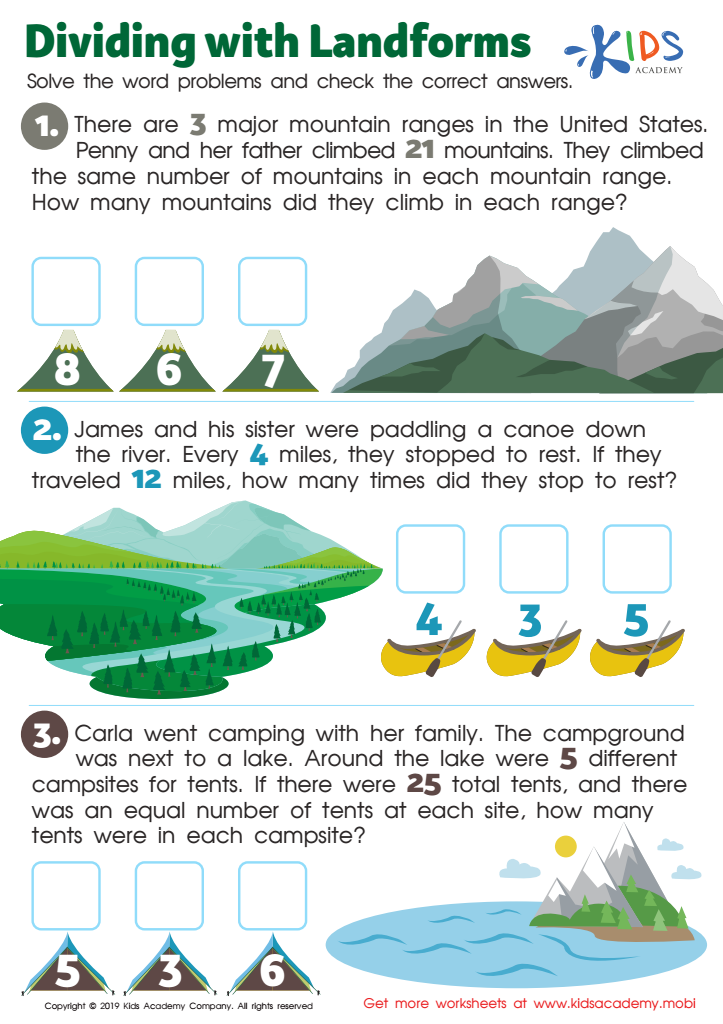Understanding landforms Normal Worksheets for Ages 6-7
3 filtered results
-
From - To
Explore the fascinating world of landforms with our Understanding Landforms Normal Worksheets designed for ages 6-7. These engaging worksheets introduce young learners to various landforms such as mountains, valleys, rivers, and plains through fun activities and colorful illustrations. Each worksheet promotes critical thinking and enhances geographical knowledge, making it perfect for kids to understand the natural world around them. Interactive exercises ensure that learning is not just educational but also enjoyable, sparking curiosity and enthusiasm about Earth’s landscapes. Perfect for home or classroom use, these worksheets provide a vital foundation in geography for early learners. Start your exploration today!


Landforms: Pirate Maze Printable


Maps and Landforms Worksheet


Dividing with Landforms
Understanding landforms is essential for children aged 6-7 because it lays the foundation for their knowledge of the world around them. At this age, children are naturally curious and eager to explore their environment. Learning about different landforms—such as mountains, valleys, rivers, and deserts—helps them make sense of their surroundings and fuels their imagination.
This knowledge encourages exploration and outdoor activities, enabling children to appreciate nature and develop a sense of belonging to their community. It also fosters critical thinking skills as they begin to recognize how landforms can affect weather, habitats, and even human activities.
For parents and teachers, explaining landforms in relatable ways can enhance children’s understanding of geography and science, opening doors to interdisciplinary learning. For instance, activities can involve real-life mapping of local landscapes or storytelling centered around landform adventures.
Moreover, understanding landforms equips children with the vocabulary and concepts they will engage with in the future, enriching their educational journey. Encouraging curiosity about the Earth’s features nurtures well-rounded individuals who are informed about environmental issues as they grow older. Engaging with landforms supports children’s cognitive development while instilling a lifelong appreciation for the natural world.
 Assign to My Students
Assign to My Students




















